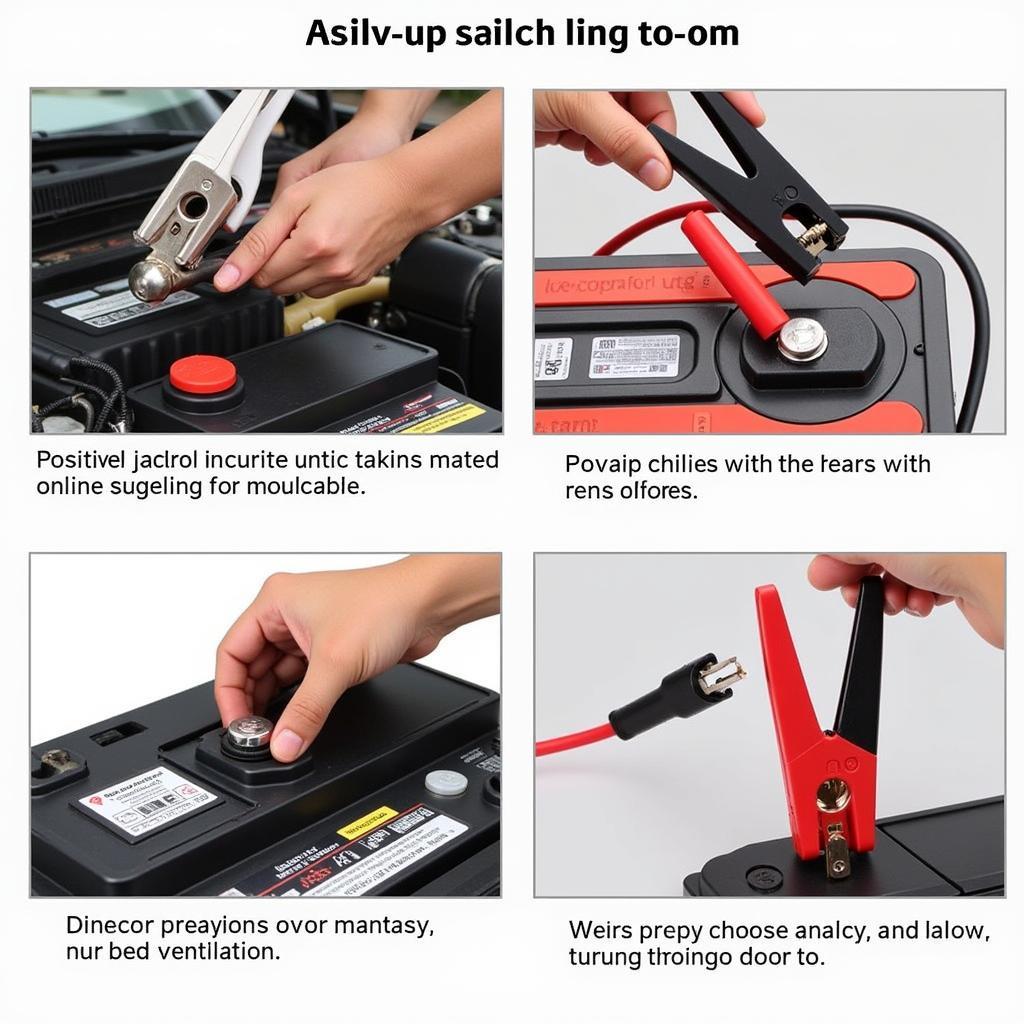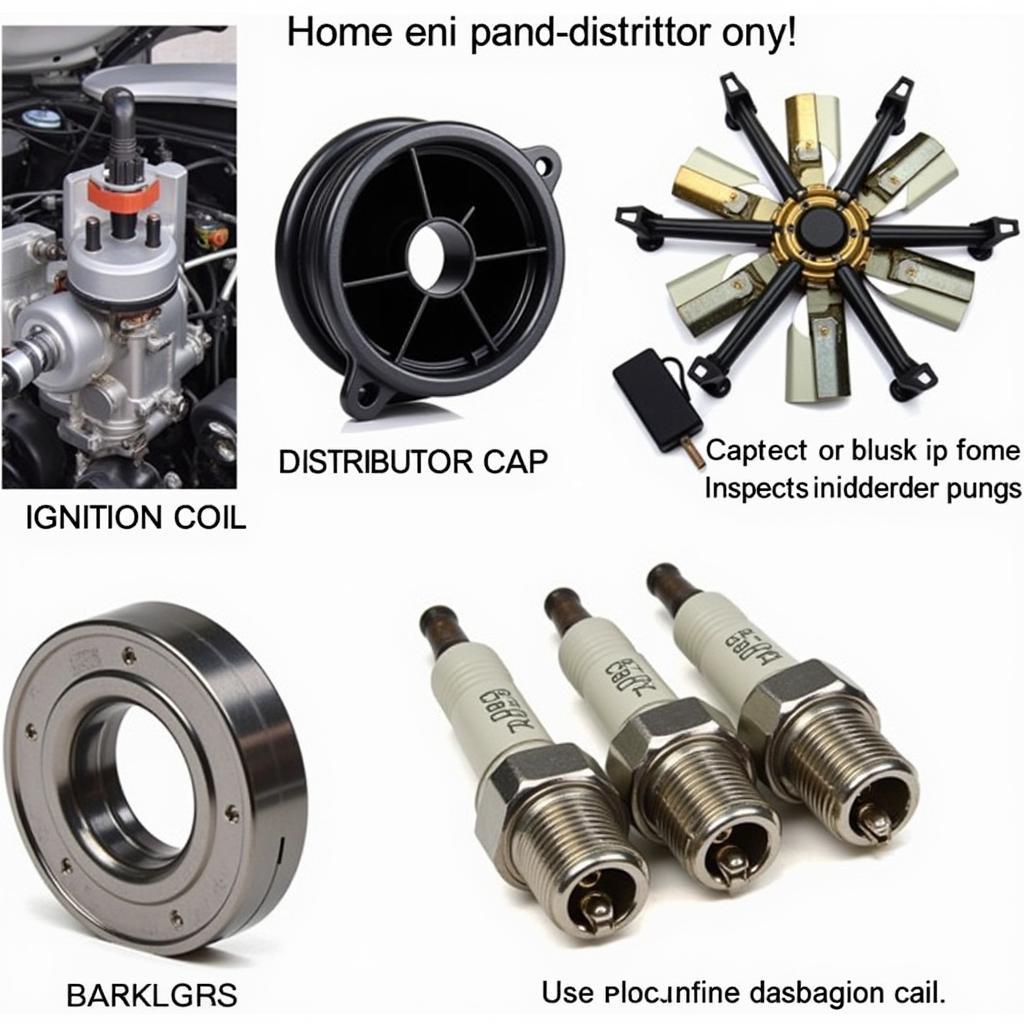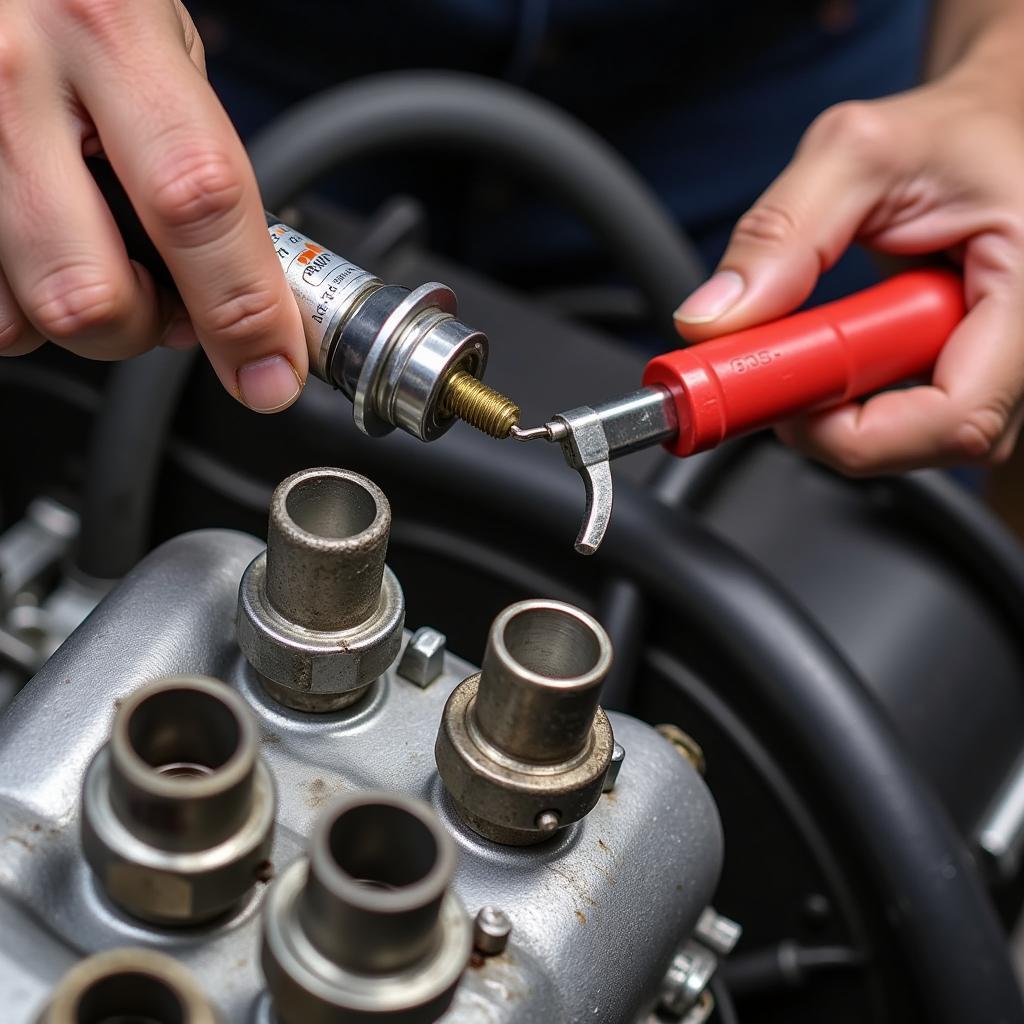A car that won’t start can be incredibly frustrating. This comprehensive guide offers effective Car Starting Problem Solutions, covering common causes and troubleshooting steps. Whether it’s a clicking sound, a slow crank, or complete silence, we’ll help you diagnose and fix the issue.
Having a reliable car is essential for most of us. When your car decides to play dead and refuses to start, it throws a wrench in our daily routine. But before you panic and call a tow truck, you might be surprised to learn that many car starting problems can be diagnosed and even fixed without professional help. This guide will provide you with car starting problem solutions for the most common issues, empowering you to get back on the road quickly and efficiently. See our guide on car slow starting problems for more information on sluggish starts.
Common Causes of Car Starting Problems
Understanding the root cause is the first step towards finding an effective solution. A car starting problem can stem from several issues, ranging from a simple dead battery to more complex electrical or mechanical failures.
Dead Battery
Perhaps the most frequent culprit, a dead battery can result from leaving lights on, extreme temperatures, or simply old age. Jump-starting the car is a temporary fix, but a new battery is often necessary.
Faulty Starter
The starter motor is responsible for cranking the engine. A clicking sound when you turn the key often indicates a failing starter.
Ignition System Issues
Problems with the ignition switch, coil, or distributor can prevent the engine from receiving the spark it needs to ignite the fuel.
Fuel System Problems
A clogged fuel filter, faulty fuel pump, or empty fuel tank can prevent fuel from reaching the engine.
 Car Battery Jump Start Procedure
Car Battery Jump Start Procedure
Troubleshooting Car Starting Problems
Before calling for roadside assistance, try these troubleshooting steps. They could save you time and money.
Check the Battery
Inspect the battery terminals for corrosion. Clean them with a wire brush and baking soda solution if necessary.
Test the Starter
If you hear a clicking sound, the starter may be faulty. Try tapping it gently with a hammer while someone turns the key. This can sometimes temporarily dislodge a stuck component. Also consider a car late starting problem guide for further assistance.
Inspect the Ignition System
Check the ignition switch, coil, and distributor for damage or loose connections.
 Inspecting Car Ignition System Components
Inspecting Car Ignition System Components
Examine the Fuel System
Ensure you have enough fuel. If so, check the fuel filter and fuel pump.
Self-Testing for Car Problems
Modern cars often have self-diagnostic capabilities. Check your owner’s manual for instructions on how to access these self test car problems.
“Regular maintenance is key to preventing starting problems,” says automotive expert, Robert Johnson, ASE Certified Master Technician. “Simple checks like battery terminal cleaning and fluid level checks can save you a lot of hassle down the line.”
Car Starting Problem Solutions: Specific Scenarios
Car Diesel Engine Starting Problems
Diesel engines have unique starting characteristics. Cold weather can significantly affect their starting performance. If you’re experiencing car diesel engine starting problems, check the glow plugs and fuel quality.
 Diesel Engine Glow Plugs Inspection
Diesel Engine Glow Plugs Inspection
1997 Lincoln Town Car Starting Problems
Older vehicles, like the 1997 Lincoln Town Car, can have specific starting problems related to age and wear. Common issues include ignition switch failures and fuel pump problems. For detailed guidance on this model, you can check our article on 1997 lincoln town car starting problems.
“Don’t underestimate the importance of a good quality battery,” adds Susan Miller, Automotive Engineer. “A reliable battery is crucial for consistent starting performance, especially in harsh weather conditions.”
Conclusion
Addressing car starting problems effectively requires a systematic approach to diagnosis and troubleshooting. By understanding the common causes and utilizing the troubleshooting steps outlined in this guide, you can often pinpoint the issue and implement the appropriate car starting problem solution. Remember, preventative maintenance is always the best approach. Regular checks and timely replacements can save you from unexpected breakdowns. For further assistance or expert advice, connect with us at AutoTipPro. Contact us at +1 (641) 206-8880 or visit our office at 500 N St Mary’s St, San Antonio, TX 78205, United States. We’re here to help you keep your car running smoothly.






Leave a Reply